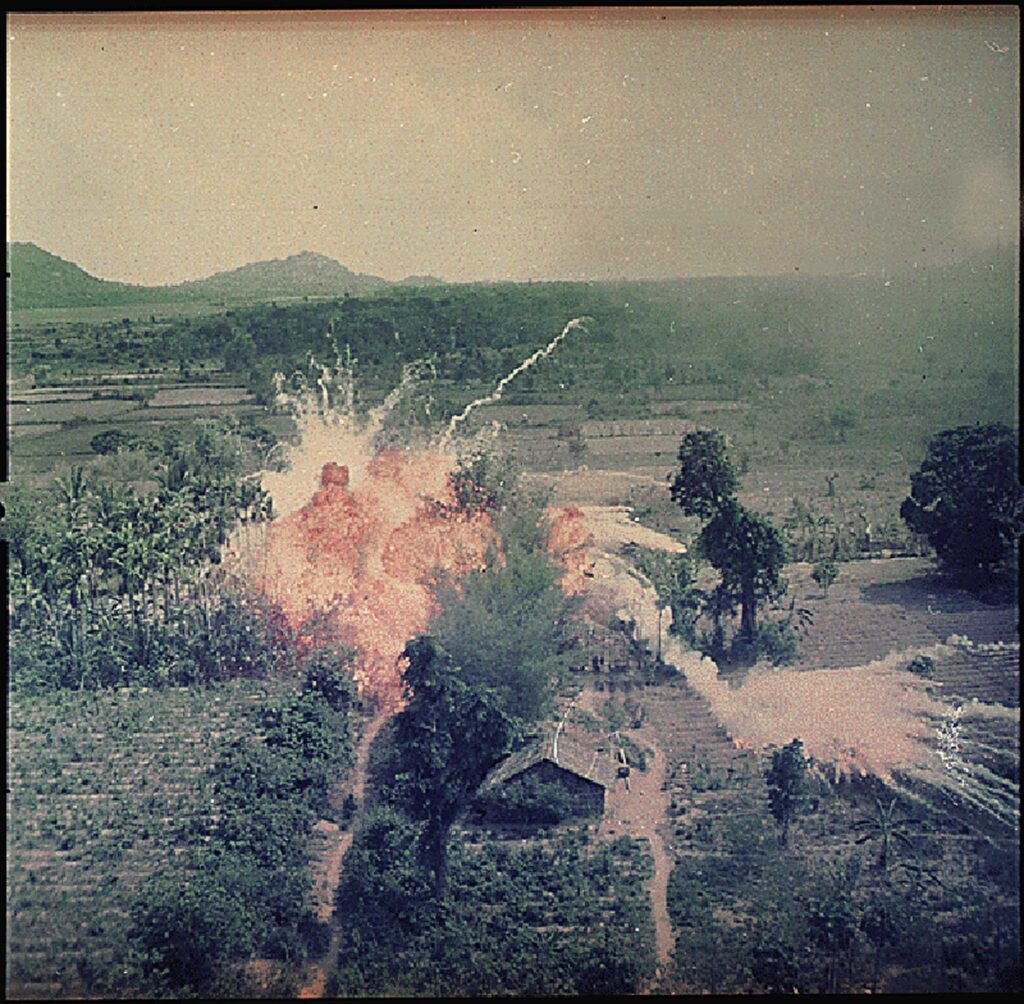Napalm is the aluminum salt or soap of a mixture of naphthenic and aliphatic carboxylic acids (organic acids with rings and chains of carbon atoms in their molecular structures), which is used to thicken petrol for use as an incendiary in flamethrowers and firebombs. The thicker combination, now known as napalm, burns slower and can be propelled more precisely and over longer distances than petrol. It was created by scientists in the United States during World War II and the Vietnam War.
Napalm is also used in a pyrotechnic gel that contains petrol, less volatile petroleum oil, powdered magnesium, and sodium nitrate; this composition burns at around 1,000° C (1,800° F), compared to thickened petrol at 675° C (1,250° F).
Introduction
Napalm is a weaponized chemical mixture that produces a highly flammable and viscous liquid. The initial thickening agent was a mixture of naphthenic and palmitic acids, giving rise to the trade name “na-palm” but also to the more generic moniker firebomb fuel-gel mixture. There are numerous chemical variants utilised in napalm. Aluminum salts, polystyrene, and benzene are the most prevalent contemporary compositions. Detonation then occurs as a result of several explosive chemicals igniting phosphorous, which burns at a high enough temperature to ignite the fuel mixture.
Etiology
Napalm poisoning is usually always the effect of military activity. Military applications include the employment of napalm-containing bombs dropped from planes, the use of napalm in flamethrowers (handheld or vehicle-borne), and the use of napalm in ground explosive devices.
Non-military exposure may occur as a result of improvised hand-held firebombs or “Molotov cocktails.” Homemade firebombs may use fuel thickening additives to produce a weapon with the same effect as military-grade napalm. Individuals or groups using these weapons may or may not be affiliated with a uniformed military.
Napalm and Vietnam
The effects of napalm poisoning in Vietnam were so horrible that they cannot be expressed in a few words; only those who experienced it can describe what napalm is like.
Witnesses to napalm’s impact described eyelids so burned they could not be shut and flesh that looked like “swollen, raw meat.” In Vietnam, the first televised war, viewers began to see images of the civilian casualties caused by napalm bombs, and a January 1967 article in Ramparts magazine presented color photographs of mutilated Vietnamese children. The pictures helped Martin Luther King Jr. decide to go public with his opposition to the war. And at colleges across America, students brandished the photographs as they began protesting Dow recruiters. The first demonstrations occurred in October 1966 at the Berkeley campus of the University of California and Wayne State University in Michigan, and over the next year, more than a hundred other protests would take place. The two key student demonstrations at the University of Wisconsin, in February and October 1967, were both triggered by Dow recruitment on campus.

‘Napalm Girl’ at 50: The story of the Vietnam War’s : CNN
The horrifying photograph of children fleeing a deadly napalm attack has become a defining image not only of the Vietnam War but the 20th century. Dark smoke billowing behind them, the young subjects’ faces are painted with a mixture of terror, pain and confusion. Soldiers from the South Vietnamese army’s 25th Division follow helplessly behind.
Taken outside the village of Trang Bang on June 8, 1972, the picture captured the trauma and indiscriminate violence of a conflict that claimed, by some estimates, a million or more civilian lives. Though officially titled “The Terror of War,” the photo is better known by the nickname given to the badly burned, naked 9-year-old at its center: “Napalm Girl”.
The girl, since identified as Phan Thi Kim Phuc, ultimately survived her injuries. This was thanks, in part, to Associated Press photographer Nick Ut, who assisted the children after taking his now-iconic image. Fifty years on from that fateful day, the pair are still in regular contact – and using their story to spread a message of peace.




